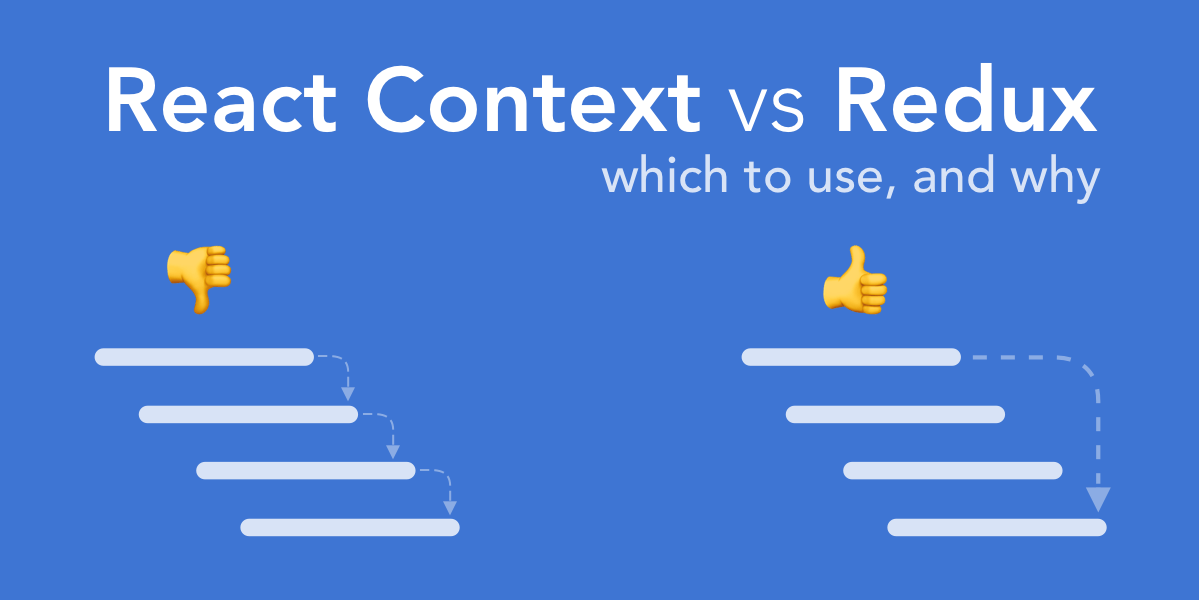
In this article, we went through what is Redux and Context API and their differences. So you no longer have to that guy who goes: When you have a lot of dynamic data Redux got your back!
REDUX VS CONTEXT CODE
UI logic and State Management Logic are in the same componentīetter code organization with separate UI logic and State Management Logicįrom the table, you must be able to comprehend where the popular opinion Redux is for large projects & Context API for small ones come from.īoth are excellent tools for their own specific niche, Redux is overkill just to pass data from parent to child & Context API truly shines in this case. Incredibly powerful Redux Dev Tools to ease debugging Works like a charm with both static and dynamic dataĪdding new contexts requires creation from scratchĮasily extendible due to the ease of adding new data/actions after the initial setupĭebugging can be hard in highly nested React Component Structure even with Dev Tool Specifically designed for static data, that is not often refreshed or updated Requires extensive setup to integrate it with a React Application That's all Phew! As you can see, Redux requires way more work to get it set up.Īdditional installation Required, driving up the final bundle size Context provides a way to share values like these between components without having to explicitly pass a prop through every level of the tree.Ĭontext API is a built-in React tool that does not influence the final bundle size, and is integrated by design.Ĭonst Context = createContext ( MockData ) Ĭonst Child = () =>

locale preference, UI theme) that are required by many components within an application. In a typical React application, data is passed top-down (parent to child) via props, but such usage can be cumbersome for certain types of props (e.g. But which one of them is best suited for your application? Today we are going to answer this age-old question! To solve the prop drilling issue, we have State Management Solutions like Context API and Redux. If we pass on the data through the props, every single one of the children would be required to accept the data and pass it on to its child, leading to prop drilling, a terrible practice in the world of React. But an issue arises when a deeply nested child requires data from a component higher up in the tree.

The simplest way to pass data from a parent to a child in a React Application is by passing it on to the child's props.


 0 kommentar(er)
0 kommentar(er)
